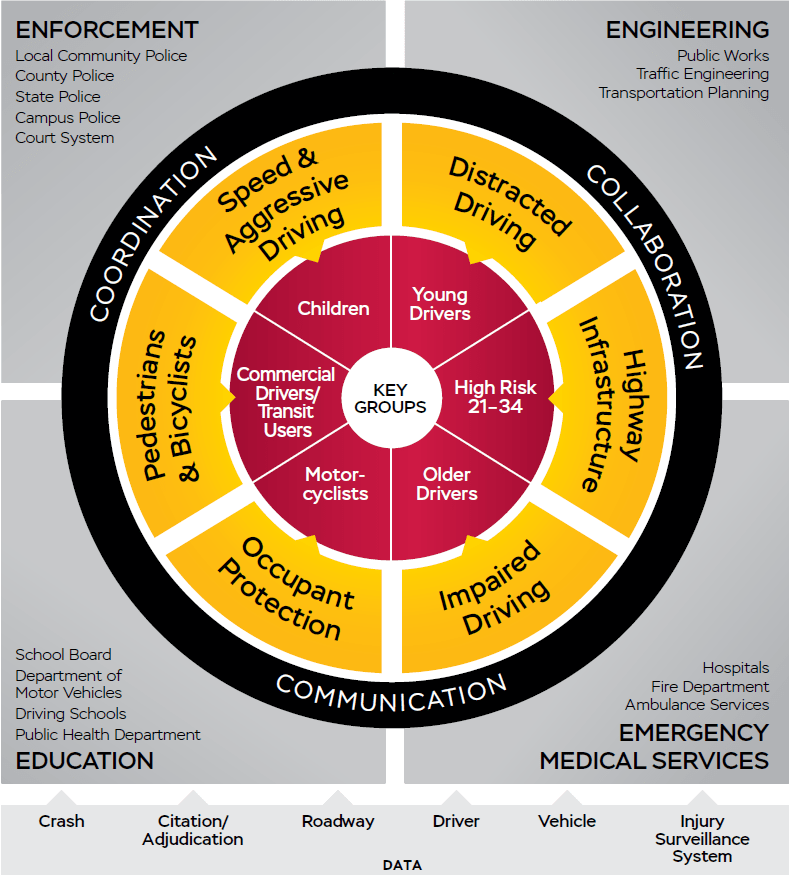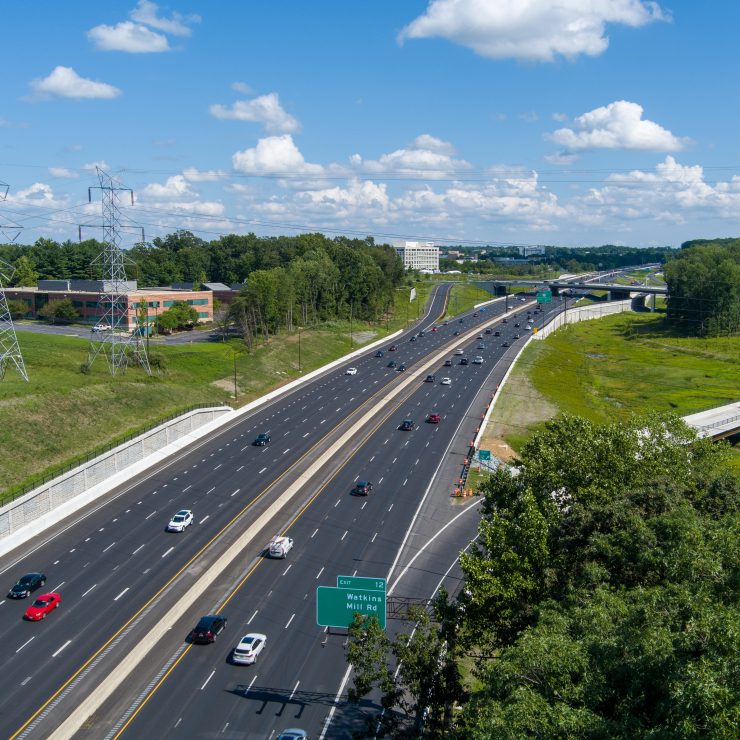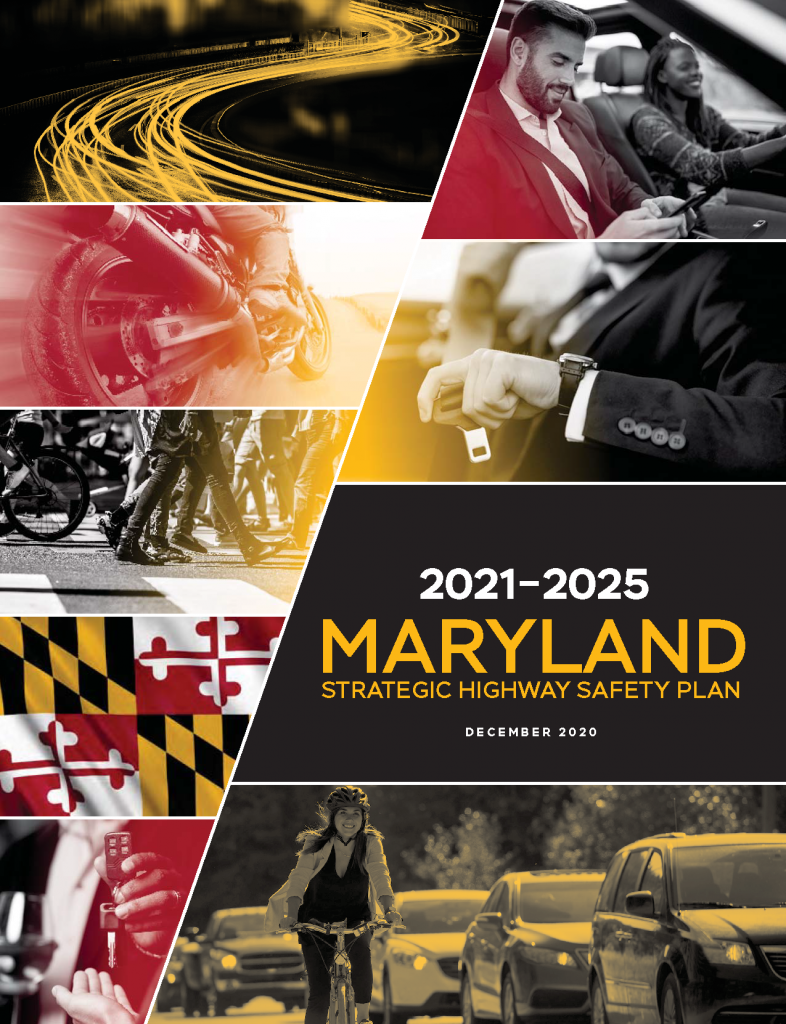Strategic Highway Safety Plan (SHSP)
The Maryland SHSP utilizes a data-driven approach to build effective strategies, create action steps, and establish performance measures to help achieve our goal of zero roadway deaths.
SHSP Workshop Meeting Minutes
2021 – 2025 SHSP
Maryland believes that crashes are preventable and views zero as the only acceptable number of motor vehicle deaths. In 2019, the Maryland legislature passed a Vision Zero bill. The law set a goal of zero motor vehicle-related fatalities or serious injuries by 2030. Established in October of 2019, Maryland’s Vision Zero law provides for an MDOT-designated coordinator to oversee the implementation of the plan, collaboration with other State agencies and local authorities, yearly reporting, and strategies to achieve the established goals.
Maryland uses a multi-disciplinary approach to crash prevention and severity mitigation, including strategies that address roadway design, driving behaviors, technology, and policies by working with our wide network of partners across the State. Partners who carry out this work include, but are not limited to, academic institutions and staff, agricultural professionals, engineers, first responders, government officials, law enforcement, policymakers, public health professionals, and traffic planners.
The 2021-2025 Maryland SHSP builds on the experience, efforts, and successes of previous SHSPs.
SHSP Emphasis Areas
MHSO focuses on six Emphasis Areas that have been determined as the major causes of motor vehicle crashes and fatalities.
On average, every year in Maryland 181 people are killed and 1,507 are seriously injured in crashes in which distraction was recorded as a contributing factor. Distracted driving is not a new issue but has moved into the spotlight in the past decade as more drivers own cell phones. More information on distracted driving can be found here.
Impairment from alcohol or drugs is a well-known risk factor for road traffic injury. These substances impair coordination and the ability to perceive and respond to hazards. In Maryland, more than 30 percent of traffic-related fatalities involve alcohol and/or drugs. More information on impaired driving can be found here.
Roadways and intersections are designed and built based upon certain assumptions and standards including but not limited to traffic volume, design speed, roadway users, and built environment. Engineers and planners continually evaluate traffic system data and look for ways to address safety and mobility needs in a timely and cost-efficient manner. More information on infrastructure in Maryland can be found here.
While automotive safety technologies continue to evolve, the restraint system remains a major factor in mitigating injury or preventing death in a collision. If all front-seat occupants of a vehicle buckled up, Marylanders would reduce the risk of fatal injury by 45% and moderate-to-serious injury by 50% if in a passenger car; 60% and 65% if in a light truck. More information on seat belts and car seats can be found here.
Pedestrians and bicyclists are our most vulnerable road users. The number of pedestrians and bicyclists on Maryland roadways is increasing at a greater rate than vehicular traffic. Non-motorist traffic fatalities once comprised one in five of all traffic fatalities; they now comprise one in four fatalities. More information on pedestrian and bicyclist safety can be found here.
Speeding violations (not including automated enforcement), make up 12 percent of the 1.7 million moving violations issued every year in Maryland. Speed and aggressive driving not only increase the number of crashes on our roads but also increase the severity of crash outcomes. More information on speed and aggressive driving can be found here.
Working Together
Data is the foundation for the SHSP’s development, implementation of strategies, and progress tracking. The four Es (Education, Enforcement, Engineering, and Emergency Services) are the cornerstones of the action plan that are driven by coordination, collaboration, and communication amongst the six emphasis area teams. The teams are made up of partners across the State that focus on reducing serious crashes and fatalities among the key groups highlighted at the center of the wheel.

Local Strategic Highway Safety Plans
In 2019 in Maryland, a traffic crash occurred every five minutes; someone died in a crash every 16 hours, and someone suffered a serious injury in a crash every three hours.
In 2005, the Safe, Accountable, Flexible, Efficient Transportation Equity Act: A Legacy for Users (SAFETEA-LU) transportation bill introduced Strategic Highway Safety Plans (SHSP). Subsequent transportation bills have required SHSPs as a data-driven, statewide coordinated plan to reduce traffic-related crashes, injuries, and fatalities. An SHSP is intended to incorporate the Highway Safety Improvement Program (HSIP), Highway Safety Plan (HSP), and the Commercial Vehicle Safety Plan (CVSP) in order to provide an all-encompassing method for safety planning.
Maryland developed its first SHSP in 2003 using the American Association of State Highway and Transportation Officials (AASHTO) plan. The State is currently implementing its fifth plan covering 2021-2025. Several years ago, former Maryland Secretary of Transportation Pete K. Rahn suggested that each of Maryland’s 24 jurisdictions develop local strategic plans to complement the State plan. A notable portion of serious crashes occur on roads that are maintained by local departments of public works or transportation and are under the authority of local police departments and sheriff’s offices. The implementation of local SHSPs ensures that the entire roadway network and population are considered for safety countermeasures.
Strategic planning is a proven, effective process when all partners are engaged throughout the planning, implementation, and evaluation phases.
Local Strategic Highway Safety Plans (LSHSP) and Vision Zero Plans (VZ), can be developed in coordination with the Maryland Highway Safety Office. Local jurisdictions are encouraged to develop their own SHSP that takes on the principles and overall goals of the Maryland SHSP while addressing specific concerns in their jurisdictions. Community Engagement Managers offer support and resources to local jurisdictions that are interested in creating their own plans. To view established local highway safety plans please visit our Community Outreach page.
If interested in developing an SHSP for your municipality, town, or county, please refer to the Local SHSP Manual or contact us.
The Bipartisan Infrastructure Law has made funds available to develop local plans. For more information on Safe Streets for All Grants, click here.
Vulnerable Road User Safety Assessment
Shortly after the successful publication of Maryland State Highway Administration’s (SHA) Pedestrian Safety Action Plan (PSAP) in May 2023, and in partnership with the Federal Highway Administration, SHA released the Vulnerable Road User (VRU) Safety Assessment. The VRU Safety Assessment expands upon the PSAP and addresses Infrastructure Investment and Jobs Act provisions for people walking and bicycling. This assessment includes additional years of crash data, guidance for our local agency partners, and another round of consultation with interested parties to further align our approach with public interests.
The VRU Safety Assessment lends further support to our efforts to apply the Context Driven philosophy to make Vision Zero a reality. By ramping up our implementation efforts and continuing to foster relationships with local partners, SHA marches forward toward achieving its mission and vision, to safely connect Marylanders to life’s opportunities.
The VRU Assessment can be found as an appendix in the SHSP.
SHSP Executive Council Meeting – November 30, 2021

Strategic Highway Safety Plan Available for Download
We all need to work together to make our goal of zero traffic deaths and injuries a reality. Download your copy of the SHSP today.
